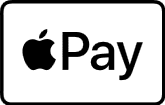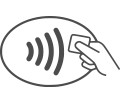Apple Pay is available to Bank of Ireland UK customers* on Apple devices.
Add your debit card to Apple Pay on your iPhone, Apple Watch , iPad or Mac and make quick, easy and contactless payments. You can use Apple Pay for in-app purchases and on the web too. It’s a safe and secure way to pay.
*Apple Pay is available on all Bank of Ireland UK personal and business debit cards (initially this will be made available for sole traders who are sole signatory on their business account).
Note – This service is not available to Bank of Ireland UK personal & commercial credit card holders at this time.
Features & Benefits
Apple Pay takes the hassle out of paying for goods or services, allowing you to make quick, easy and contactless payments by holding your device near a card reader. You can also pay for goods and services in apps or online using Apple Pay.
- No need to have your physical card, wallet or bag on you to make payments when you’re out and about. You just need the Apple devices you use every day.
- It keeps you from having to touch physical buttons or exchange cash when you’re out getting what you need.
- You can store your Bank of Ireland UK debit card in Apple Wallet. (Please note that Bank of Ireland UK credit cards cannot be stored within Apple Pay at present.)
- You can use Apple Pay to pay for goods and services online. No need to remember or find your card details, or share these with merchants.
- There is no upper limit, so you are not restricted to the current contactless payment limit (transactions over £100 may not be supported by some merchant terminals).
- If you report your debit card as lost or stolen, a new card will be ordered and posted to you. Your Bank of Ireland UK debit card in your Apple wallet will be automatically updated on the second business day after reporting the card lost or stolen. You do not need to update your Apple wallet. You will not be able to use your Bank of Ireland UK debit card on your Apple wallet until it has been automatically updated.
- You can use Apple Pay wherever you see the Apple Pay logo, or contactless payment symbol.

